Spider brains have both legs, leeches have 32 brains, squid digest food through the brain... are interesting discoveries about the brains of animals. Join Toplist to learn more about the animals with the weirdest brains on the planet!
Spider brains even on the bottom
Spider brains are relatively large compared to the rest of the body, their brain not only on the head but also spread down to the legs. The Smithsonian Tropical Research Institute (Panama, USA) conducted research and discovered that the central nervous system of the world's smallest spiders occupies nearly 80% of their body cavity. Meanwhile, the human brain only accounts for 2-3% of the body weight.
All spiders have the ability to make cobwebs, a thin but strong silk-like fiber of protein, secreted from the back end of the abdomen. Spider webs are used to do many things such as creating ropes for climbing walls, nesting in rock cavities, creating places to hold and pack bait, holding eggs and holding sperm. Many spiders use the sticky nature of their webs to trap prey, while others hunt by stalking and ambush attacks.
Aside from the 150 species of spiders in the Uloboridae, Holarchaeidae and Mesothelae families, all other species are capable of injecting venom when biting - either in self-defense or to kill prey. However, only 200 species have venom harmful to humans[1]. Many species of spiders are large, painful bites but do not cause toxicity or death.
Spiders have four pairs of legs on either side of the cephalothorax. The body and legs are sparsely hairy to sense vibrations, sounds and scents. There are two jaws on each side of the mouth that are used to clamp the bait and cling to the partner during intercourse. Spiders do not chew, but only stick a straw into the bait to suck the liquid out.

Giant squid consume food through brain
With giant squid, they have to grind food into relatively small pieces because when swallowing, the food must pass through the donut-shaped brain before going down the esophagus. If the food is not crushed, the brain can be damaged as the food passes. Mr. Steve O'She of Auckland University of Technology, New Zealand revealed in the British Metro newspaper that the male giant squid has a weight of 150kg, a length of 10m, a penis length of 1.5m but only one small brain only 15g.
The genus of giant squid (Architeuthis), also known informally as ghost squid which may include eight species, is recognized as being up to 13 meters (female) or 10 meters (male) in length. They live in the deep ocean in the North Atlantic and North Pacific Oceans from the coast of Mexico through the Hawaiian Islands (USA) to the Ogasawara Islands (Japan). It has eight short and two long tentacles with maximum sizes of 13 m (female) and 10 m (male). The genus is second only to the squid Mesonychoteuthis hamiltoni as the supposedly immature specimens collected by humans have been 14 m long. Females are usually about 2 m longer than males. There have been reports of sightings of squids up to 20 m long, but there is no scientific record of such a large living creature in existence.
These giant squids are said to be aggressive and attack other animals including fishermen and their boats. Due to their large size, their tentacles are very strong and the suction is very strong. Fishermen in Mexico often only show broken wood on their boats from being sucked out by giant squid.
The giant squid's natural enemy may be the sperm whale (Physeter macrocephalus) because it has been discovered that giant squid parts have been found in the stomach of this whale. However, injuries have also been found, possibly caused by giant squid tentacles on the skin of sperm whales.

Zombie ants with mushrooms in their brains
This is not exactly the ant brain, but in this particular case, the ant "victims" interact with some kind of parasitic fungus. The Cordyceps fungus enters the insect's body and turns them into a "zombie", manipulating the ants' behavior to spread and multiply fungal spores. The fungus will "command" the diseased ant to "pretend" to crawl to a leaf and suddenly lock its lower jaw to the central vein of the leaf, causing the ant to not move and the fungus to be fixed in place. it wants. When the ant dies, the fungus begins to sprout on the ant's head, forming a rough envelope of fungal spores that will fall to the forest floor when night falls.
Many previous studies have shown that a parasitic fungus has invaded and controlled the nerve function to turn ants into zombies. Zombie ants will be commanded, roaming everywhere and ready to bite any animal that the fungus commands. From this background, experts from the University of Munich (Germany) conducted research, analysis and conclusions on the ability to recognize the preferred "host" of the fungus, thereby providing information on the mechanism of the fungus. particles of this phenomenon. Thereby, better understand the mechanism that makes ants turn into zombies.
This study focused on fungi belonging to the genus Ophiocordyceps. This fungus will secrete special chemicals that directly affect the host's nervous system to control behavior, specifically here, turning ants into slaves wandering everywhere, biting leaves and devouring anything. when the mushroom ordered. After being infected, some animals also act strangely, such as jumping and falling from the treetops to the ground. Both of these behaviors are mechanisms intended to help fungal spores spread as far as possible.

Wasps with the smallest nervous system in the insect world
Despite having a complete body with eyes, brain, wings, muscles, intestines and genitals, the Megaphragma wasp has a brain smaller than a single-celled amoeba. The researchers believe that this wasp species has the smallest nervous system among insects. The few nerve cells that exist inside the wasp's head grow outward as it matures, because there isn't enough room in its head. Fortunately, when grown outside, these neurons only survive for 5 days.
Like other social wasps, wasps build nests by chewing wood to make pulp. Each hive has a queen bee that lays eggs and is cared for by worker bees who, although genetically female, cannot lay fertile eggs. Most species nest exposed in trees and bushes, but some species build nests underground or in other cavities. In the tropics, these nests can survive year-round, but in temperate regions the nests will die during the winter, with solitary queens hibernating in leaf litter or other layered material. to spring. Wasps are generally considered pests, as they actively defend their nesting sites when threatened, and their stings can be more dangerous than those of honey bees. This is an aggressive and often attacking bee, the mating and migration season of wasps takes place from September to October, this is also the time when they are most aggressive.
Wasps are the number one natural enemy of Australia's most common venomous spider, they are ubiquitous across the Australian continent, and can be spotted in many collections. Parasitic wasps are notorious for their strange but extremely intelligent forms.
Warmer and drier weather is responsible for this increase in bee populations. Currently, rapid urbanization in some places is causing the habitat of wasps to shrink, and climate change may be one of the main causes of human attacks.
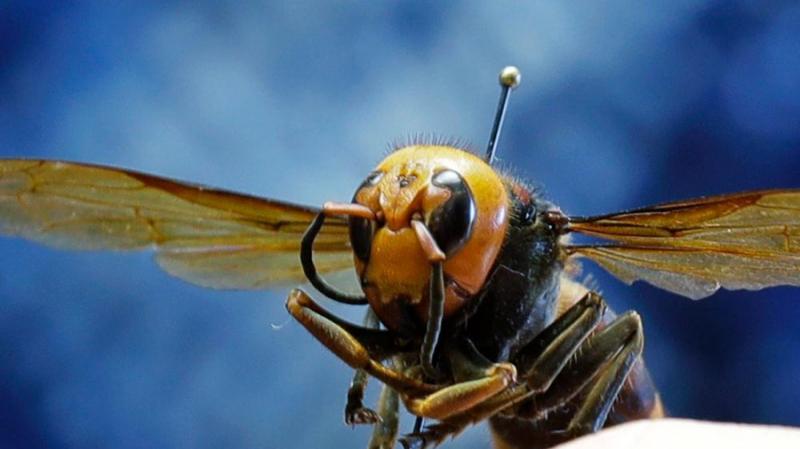
Cavalier King Charles Spaniel has a brain bigger than a skull
The Cavalier King Charles Spaniel is a popular pet in the US, and it is a fact that few people know that the brain of this animal is even bigger than their skull. They are intelligent enough to understand what their owners want and are therefore usually easy to train and respond well to gentle obedience training methods. They are said to be naturally good-natured and get along well with other dogs and pets.
The Cavalier King Charles Spaniel is a well-balanced petite dog. They are about 30–33 cm tall, weigh 5-8 kg, dogs are small in stature, 36 cm tall, 5-8 kg in weight, have a strong and sturdy body. The head is slightly rounded, the muzzle is full, tapered, the face is slightly broken. The nose is black, the snout is wide, the teeth are tight like a pair of scissors. The ears are located high on the head with dense hair. Flat back. The tail is parted about 1/3 but usually left natural. Nails should be removed. The silky coat is medium length with plenty of hair on the ears, chest, legs, and tail. Coat colors include prince charles (tricolor), ruby (crimson), king charles (brown and black) and Blenheim (red and white). Blenheim dogs, the reddish brown spots on the crown of the head between the ears are favored by breeders, this breed sheds moderately.
Dark brown eyes are round and far apart with black eye rims. They have striking eyes and a good sense of smell and can be used in small hunts where suitable. They perform well with compliance requirements. Their lifespan is about 9-14 years. Male dogs can breed at 20 months old, female dogs can breed at 16 months old, female dogs give birth to 3-6 puppies each. They have syringomyelia, hereditary eye disease, knee joint disease, back disease, ear effects, deafness. Many children have hip dysplasia. Also had mitral valve disease, a serious genetic heart problem that can cause early death. It is advisable to thoroughly check the medical history of all generations of dogs before choosing.
When taking care of them, dry bathing is necessary. The fur between the pads of the paws needs to be trimmed. Gets dirt and particles in the ear and therefore should be brushed and cleaned on the inside of the ear regularly. Always make sure the dog is clean and warm after bathing. Check your eyes carefully for any signs of infection. Do not overfeed. This breed tends to gain weight quickly. The Cavalier King Charles Spaniel has a brain bigger than their skull. This breed is a popular pet in the US, and it is a fact that few people know that the brain of this animal is even bigger than their skull.

Squid eats its own brain
This organism lives on corals and filters food from seawater. Sea squid are hermaphrodites, having both male and female reproductive organs, which reproduce by releasing eggs and sperm into the water at the same time. After about 3 days, the eggs develop into tadpole-like larvae, which are dispersed everywhere looking for growth sites. They dive to the bottom and gather together in one place and will live there for the rest of their lives. At this point, the sea squid begins to eat all parts of the body. It starts "absorbing" the eyes, the spine, and eventually, it digests its ganglion, because once it's settled in, it doesn't need them anymore.
Squid (scientific name: Teuthida) is a group of marine animals belonging to the superorder Decapodiformes of the class Cephalopoda. Squid has a clear body and head. The body is symmetrical on both sides, has skin and has 6 "arms" and 2 "limbs". Squid contains a black ink compound in the body, when in danger, the ink sprays out to create a dense black screen, thereby hiding from the threat.
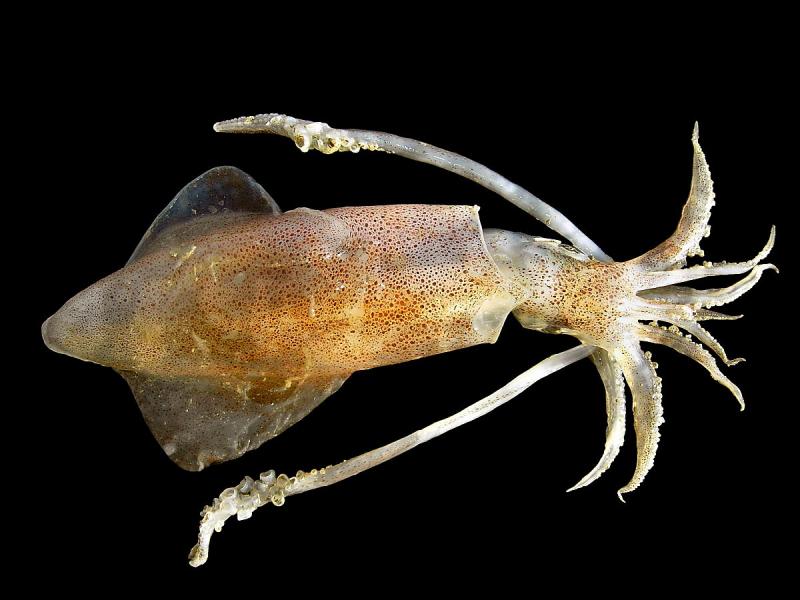
Woodpecker with airbag in its head
Have they ever asked, why woodpeckers don't suffer brain damage when they bang their beaks on hard surfaces for a long time. Like all birds, woodpeckers have a very complex skull, small and very light. The average bird's skull weighs only 1% of its body weight. Woodpeckers, however, have extra air sacs in their heads, which act as brain cushions to limit the effects of banging their beaks on hard surfaces.
Woodpeckers have strong beaks that they use to drill and knock in trees, and long sticky tongues for food (insects and larvae). When courting a mate, woodpeckers perform more than 12,000 knocks a day. Woodpeckers use straight, arrow-like knocks on the trunk of the tree to contribute to reducing the feedback force, avoiding concussions to the head. Woodpeckers can knock on hard surfaces up to 20 times a second with 1,200 times the force of gravity without any shock, brain and retina are not injured. A millisecond before the knock, the dense muscles in the bird's neck contract, while the eyelids are tightly closed, allowing some of the force to be released to the muscles in the neck, helping to protect the skull from the blows. strong typing.
Woodpecker skulls accumulate a lot of minerals that make them very solid. Brain scans show that woodpeckers have very little fluid surrounding their brains. This helps limit the amplitude of the brain's oscillations. The woodpecker's tongue is located between the eyes and wraps all the way to the back of the skull, having a composite structure of hard and flexible materials that allows it to absorb a lot of the impact and vibrations of each woodpecker peck. Combined, this type of anatomical construction helps the beak absorb mechanical stress. Their long sticky tongues, with stiff bristles, help these birds grab and retrieve insects from deep in holes in trees. It has been noted that their tongues are used to stab insects, but more detailed studies published in 2004 have shown that instead, the tongue wraps around the prey before being pulled out.
Contrary to popular belief that woodpeckers knock on tree trunks just to scare away prey from coming out or break prey nests in bark, woodpeckers knock on wood to communicate, the sound resonates. wood is a way to help them mark their territory or attract mates. Both female and male woodpeckers knock their beaks to send signals to their potential partners. In some cases, woodpeckers choose a hollow tree trunk and peck hard at it to scare away a potential predator that threatens them. Or woodpeckers can also punch holes in tree trunks to make nests.
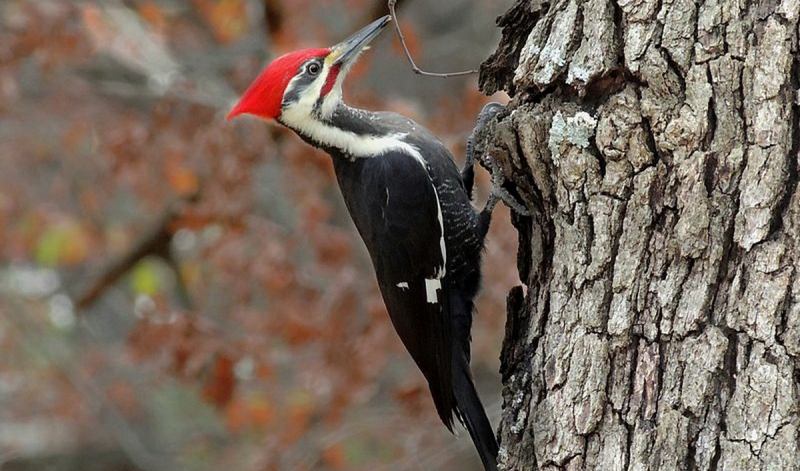
Stickleback fish
The stickleback fish (a small freshwater fish with sharp spines on its back) has a marked "unequal" between the brain sizes of males and females. The researchers suggest that it may be because the male fish is the mainstay, building the nest, taking on the responsibility of courting and caring for the eggs, so they have a larger brain size, while the females only have to choose one. mate and lay eggs, so there's no need for... a lot of brains.
They are small freshwater fish with sharp dorsal spines and a marked disproportion between the brain sizes of males and females. Males are the mainstays, building the nest, taking on the responsibility of courting and caring for the eggs, so they have more brain size, while the females only have to choose a mate and lay eggs, so they don't need to. must have a lot of brains.
Adult sticklebacks live in estuaries and downstream, returning to fresh water every spring to spawn. However, there are also some types of spiny fish that spend their entire lives in fresh water. During the spawning season, male spiny fish suddenly have many changes: their eyes become sparkling blue, the chest area suddenly turns bright red or orange. From the time they are brightly colored, they begin to attract the female spiny fish.
The male spiny fish makes a nest in a depression somewhere on the bottom of a lake or river or stream. They use a little sticky substance like glue secreted from their kidneys to stick together the branches and leaves under the water to make a nest. The nest is dome-shaped, with a hole through it.

Leeches have up to... 32 brains
To us, the leech is an animal that is both terrifying and magical. They adhere to the skin and suck blood but have the ability to clean infected wounds. While terrifying, we can't deny, these are "attractive" creatures. They have 5 eyes, 300 teeth and 32 brains.
They have only one brain, but their brain is made up of 32 ganglia. Ganglia are clusters of nerve cells that organize and process the body's signals. It plays the role of receiving signals from the body and transmitting important signals to the brain. Without ganglia, the brain would not be able to process all the information received and would be overwhelmed trying to coordinate different parts of the body at the same time.
The body of an angiosperm in general as well as a leech in particular consists of a series of similar units called segments. There is a partition between the nodes. With this structure, each segment is a part of the body, which can regulate to a certain extent the general functioning of the body. That is the main reason that when cutting / damaging individuals in certain positions, the individual leeches as well as the worms are able to regenerate and form new individuals. However, this regeneration is finite, if it breaks the sinusoidal structure, even if the individual is cut in half, the individual will not be able to regenerate. On the other hand, the worm industry has a closed circulatory system, so it will not be able to regenerate in the condition of being dried or burned.
They have soft and slimy bodies that are suitable for swimming in water. The food of most leeches is the blood of animals. The leech's mouth has a suction cup to prick its prey and suck blood. Leeches secrete anticoagulants, so the sting will bleed continuously. Some hospitals have used leeches, such as Hirudo medicinalis species, to fight blood clots for patients. Traditional Oriental medicine uses leeches to suck out hematomas, bruises, and abscesses without surgery.
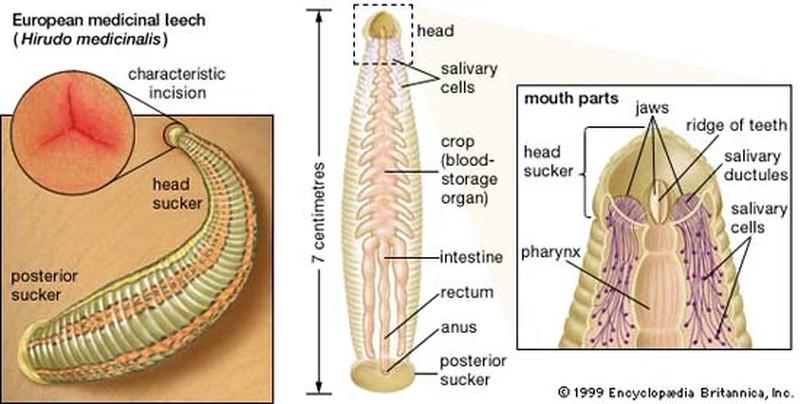
Brain roundworm Caenorhabditis elegans
The brain roundworm Caenorhabditis elegans is tiny but extremely powerful. This worm has only 302 neurons, but despite this, the species can perform the same functions as the nervous systems of higher organisms.
C. elegans has an unsegmented, worm-shaped body, and is bilaterally symmetrical. It has a cuticle, four major epidermal cords, and a fluid-filled pseudocoelom (body cavity). They also have some of the same organ systems as large animals. Almost all individuals of C. elegans are hermaphrodites and there is a small minority, about one in a thousand, of true males. The basic anatomy of C. elegans includes the mouth, pharynx, intestines, gonads, and collagenous epidermis. Males have a single lobe gonads, a vas deferens, and a mating tail, which incorporates small spines. Hermaphrodites have two ovaries, a fallopian tube, a sperm sac, and a single uterus.
Unlike other species Caenorhabditis occupies rich microbial and nutritional media. Caenorhabditis elegans feed on bacteria that grow in organic matter. The soil lacks enough organic matter to support them. C. elegans can survive on a diet a wide range of bacteria, but its natural ecology is unknown. Most laboratory strains are obtained from an artificial medium such as a garden or manure. More recently, C. elegans has been found to thrive in organic matter, especially overripe fruit. Invertebrates such as millipedes, insects, amphipods, and gastropods can transport Dauer larvae (larvae of many species of roundworms), to various suitable locations. Larvae have also been found to feed on their hosts when the host dies.
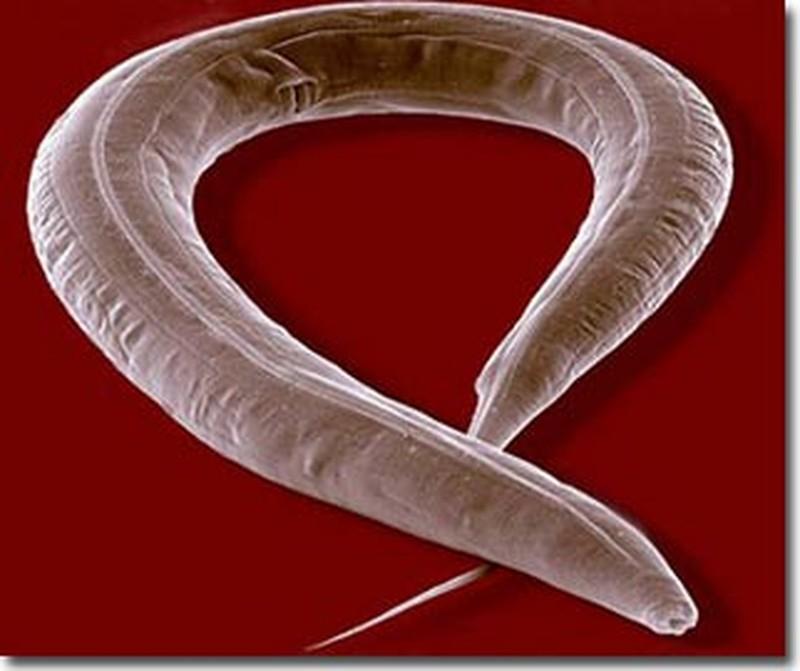
Birds of Corvids
The brains of the Corvids are highly intelligent, comparable to that of primates. This species' memory, social reasoning skills and ability to use tools have surprised scientists. This species is predicted to have an intelligence that can surpass even primates such as chimpanzees.
The group of birds Corvids knows the laws of physics. The results of animal cognition research conducted by scientists at the University of Cambridge, UK show that the Eurasian jay, a bird of the crow family, has the ability to use the mind to imagine and predict. In the future, the animal knows how to pick up pebbles and put them in a jar to raise the water level, in order to easily reach the worm in it.

Sperm whales have the largest brains on the planet
The head of a sperm whale makes up about a third of the length of its entire body and it is this part that makes it the largest brained animal that has ever existed on the planet (including creatures that have extinction). The brain of sperm whales weighs up to 8 kg, 5 times heavier than a normal human brain, the researchers said. Perhaps it is thanks to the large brain that the sperm whale knows how to use intelligence to ask for help from humans to help it get out of a "difficult" situation like in the story below.
The brain of the sperm whale weighs up to 8kg. Male sperm whales can be up to 19m long, 5 times the length of a large elephant. The heart of a sperm whale can weigh up to 125kg. Sperm whales have the largest head in the world, their head accounts for 25-35% of the total body length. Sperm whales can dive more than 1000 meters deep and can hold their breath for up to 2 hours.
Sperm whales make sounds loud enough to puncture your eardrums. It is theorized that they can stun or kill their prey with sound. The loudest sound emitted by sperm whales is a click of 235 decibels when measured above water. That noise is equivalent to the sound pressure created by a Saturn V rocket at a distance of 1m.
Sperm whale carcasses on the beach can explode. Gas builds up inside the fish's body as the food contained in their stomach breaks down. But due to their tough skin and thick fat, the gas couldn't escape, eventually ripping their bodies apart in the powerful explosion.
Every sperm whale alive today is a descendant of a female. In one study, 1600 sperm whales were examined worldwide. They all have similar mitochondrial DNA from the same ancestor, a female sperm whale that lived 80,000 years ago.
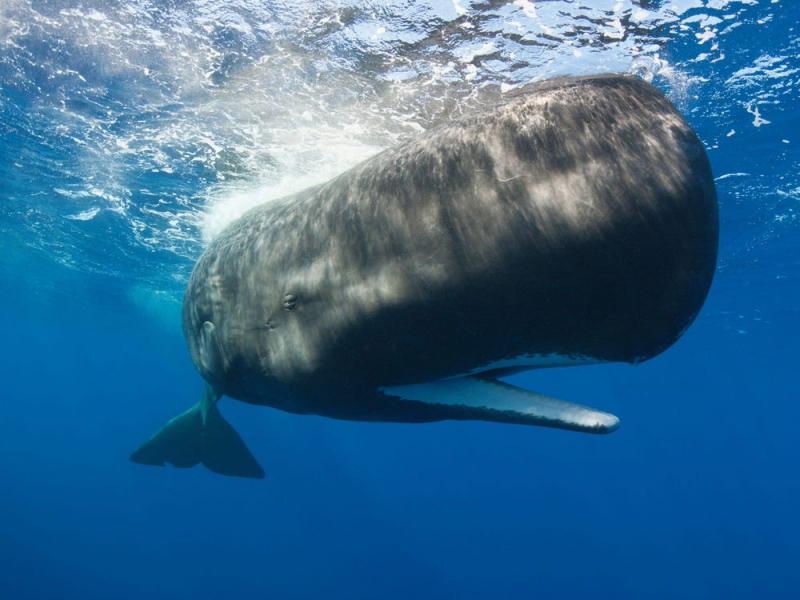
Above are the top animals with the strangest brains on the planet today that Toplist learns and provides to readers. Follow along to know more interesting things about the animal world in the following articles.










